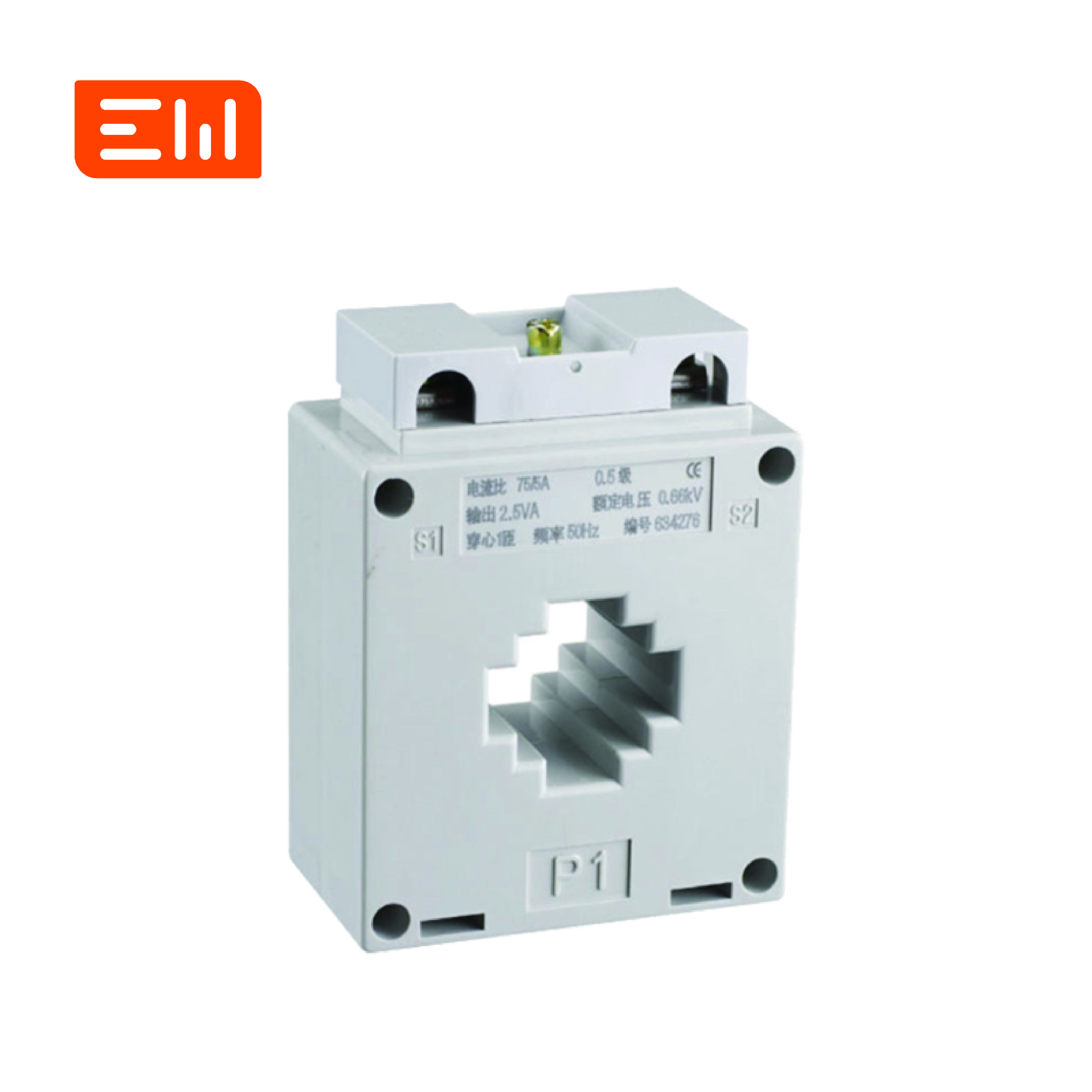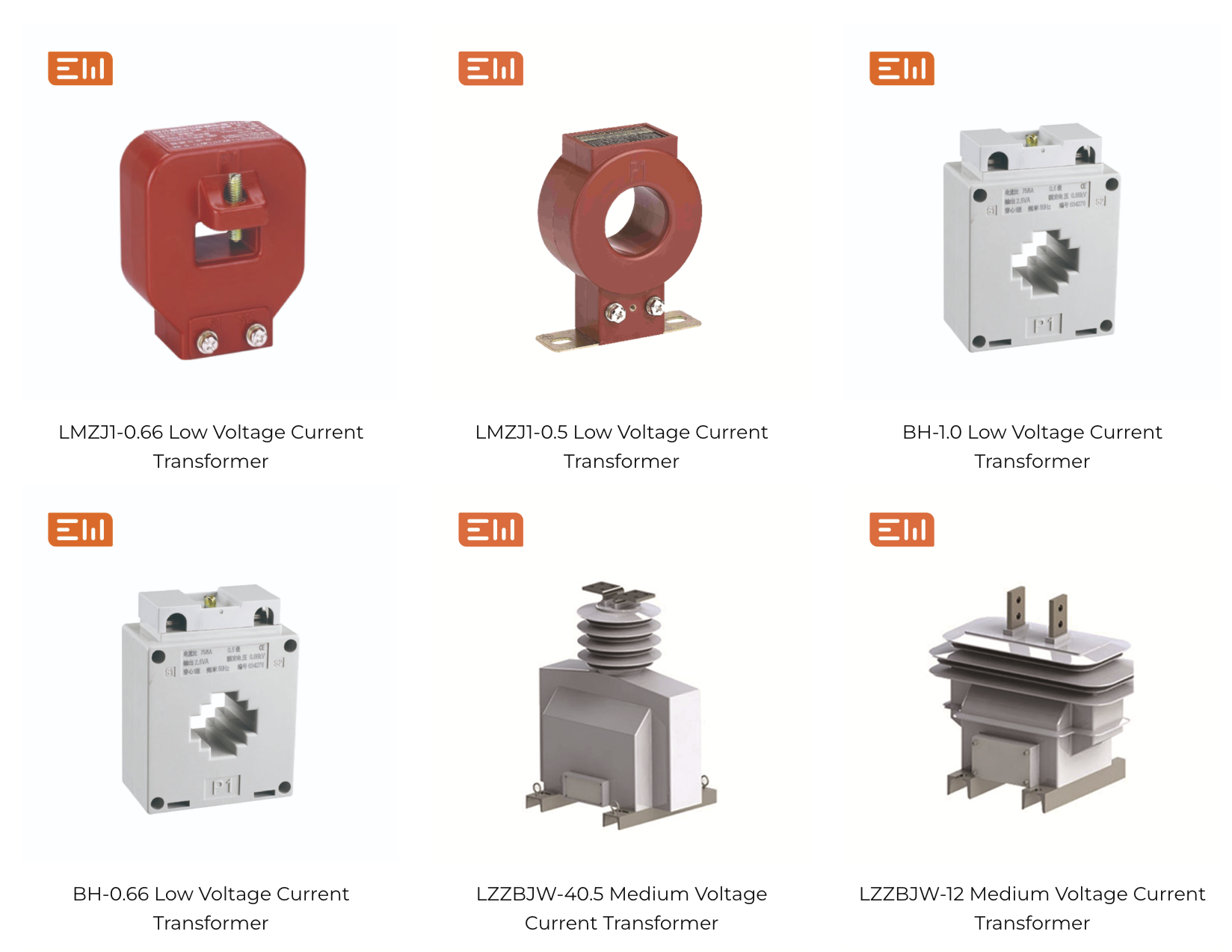Understanding the Basics of Current Transformers
Current transformers (CTs) are integral components in electrical systems. They play a crucial role in measuring high currents and protecting circuits.
Understanding the basics of current transformers can seem complex. Yet, with a clear explanation of their components and functions, it becomes simpler.
This article aims to demystify the world of current transformers. We'll delve into their construction, operation, and various applications.
We will discuss some important ideas. These include magnetic flux, primary and secondary windings, and the significance of the number of turns. We'll also discuss different types of CTs, including split core models.
Whether you are an electrical engineer, a student, or just curious, this guide will help you understand current transformers.

What is a Current Transformer?
A current transformer is a device used to measure alternating current (AC). It produces a current in its secondary coil proportional to the current in its primary conductor.
These transformers are essential in systems that handle high voltages. They reduce the current to a safer, manageable level for metering and protective devices.
Current transformers consist of two main components. The main circuit integrates the primary winding, while the secondary winding supplies output to instruments.
The design ensures electrical isolation between high voltage circuits and measuring instruments. This isolation protects devices and operators from potentially dangerous currents.
How Current Transformers Work
Current transformers operate by transferring electric current from one circuit to another through magnetic induction. When current flows through the primary winding, it generates a magnetic field.
This magnetic field creates a magnetic flux which links to the secondary winding. The key to a CT's operation is the magnetic flux connection between the primary and secondary.
The following components are critical for CT function:
- Primary Winding: Carries the load current.
- Secondary Winding: Delivers the output to measuring devices.
- Core: Made of silicon steel, it supports the magnetic flux.
The secondary winding carries a much smaller current than the primary. This scaled-down current is safe for use with protective relays and meters.
The CT's design ensures it can handle high currents while providing accurate measurements. Its structure is compact, and split core current transformers make installation easy.
The Role of Magnetic Flux
Magnetic flux is central to a current transformer's operation. It acts as the bridge between the primary and secondary circuits.
The current flowing through the primary winding produces flux. This flux links with the secondary winding, inducing a proportional current.
The effectiveness of this process largely depends on the core material. Manufacturers often choose silicon steel for its excellent magnetic properties, which support efficient flux transfer.
Primary and Secondary Windings Explained
The primary winding is a crucial part of the current transformer. It carries the current from the primary conductor in the main circuit.
Typically, designers create the primary winding as a single turn, as they design it for high currents. This means that the main conductor acts as the primary turn.
The secondary winding surrounds the core and receives the magnetic flux. The design includes many turns to scale down the current accurately.
This winding delivers the proportional lower current to meters or protective devices. The result is precise measurement and safe system operation.
Transformer Turns Ratio and Its Importance
The transformer turns ratio is a key concept in current transformers. It determines the relationship between the primary and secondary currents.
You calculate it by dividing the number of turns in the secondary by those in the primary. This ratio influences the accuracy and function of the transformer.
The proper ratio ensures the output current is a precise fraction of the primary current. Knowing this ratio helps in choosing the right transformer for specific applications.
Accurate turns ratio leads to correct measurements and effective system protection. It plays a vital role in a CT's overall performance and reliability.
Types of Current Transformers
Current transformers come in various designs to suit different applications. Each type has unique features catering to specific needs. Typical varieties encompass split core, wound, bar, and toroidal current transformers.
People recognize split core current transformers for their easy installation. Wound type and bar type CTs offer stability and precise measurements.
Toroidal transformers excel in applications requiring compact and efficient solutions. Understanding these differences helps select the right CT for any given task.
Different designs allow users to utilize current transformers in diverse settings. Their flexibility renders them crucial for power systems.
Split Core Current Transformers
Split core current transformers are lauded for their convenience. You can install them without disconnecting the primary conductor.
This makes them ideal for retrofit installations. Their design allows for easy mounting around existing wires, saving time and effort.
Despite their easy installation, split core CTs maintain reliable performance. They deliver accurate results in various applications.
Wound Type and Bar Type CTs
Wound type CTs feature windings around an iron core. They are highly accurate and suitable for precise applications.
Bar type CTs have a solid conductor bar. The bar serves as the primary winding, offering low resistance.
Users employ both types in high precision and high current environments. Their robust design ensures long-term operation.
Toroidal Current Transformers
Toroidal transformers have a doughnut shape, with the primary conductor passing through their center. This compact design simplifies installation in tight spaces.
They provide precise results with minimal electronic interference.. Their design minimizes energy losses, making them efficient.
People often use these CTs in applications requiring stable and repeatable measurements. Their flexibility makes them popular in many industries..
Applications of Current Transformers
Current transformers are essential in various electrical applications. They help in monitoring, protection, and control functions within power systems. Their skill in measuring high currents makes them crucial.
One of the primary uses is in protective relays, where they ensure system safety. CTs relay current information to help isolate faults effectively.
They also play a crucial role in power monitoring and energy metering. These applications require precise measurement for both control and billing.
The flexibility of current transformers makes them suitable for many environments. They ensure efficiency and reliability in electrical systems worldwide.
In Protective Relays
In protective relays, current transformers are crucial for safety and reliability. They detect anomalies by measuring current.
Once someone finds a fault, CTs trigger the relay to isolate the faulty section. This action prevents damage and maintains system integrity.
In Power Monitoring and Energy Metering
Current transformers are pivotal in power monitoring. They provide accurate current readings to ensure efficient power use.
In energy metering, CTs are vital for precise billing. They allow the measurement of electrical consumption, ensuring fair billing practices.
Key Specifications and Classes of Accuracy
Current transformers must meet specific standards for accuracy and performance. These specifications ensure reliable readings across applications. Accuracy classes are vital as they determine the precision of the CT.
Accuracy classes are particularly important in metering and protection. Different classes, like class 0.5, offer varying levels of precision. Knowing the accuracy class helps in selecting the right CT for an application.
Other key specifications include the rated current, burden, and saturation levels. All these factors influence the CT's effectiveness in its intended role. Understanding them is critical for system design.
Choosing the right specifications helps prevent costly mistakes and system problems. Always consider application requirements when selecting a CT.
Understanding Class 0.5 CTs
Class 0.5 CTs are known for their high accuracy. They offer precision with only ±0.5% error in measurement.
This makes them ideal for demanding applications like billing. With such accuracy, class 0.5 CTs ensure reliable data for energy consumption. Their use is common in both commercial and industrial settings.
The Significance of Burden and Saturation
Burden refers to the load connected to a CT's secondary winding. An optimal burden ensures accurate performance.
Saturation occurs when the core can't handle the magnetic flux. This can distort measurements, leading to inaccuracies. Understanding burden and saturation helps in selecting a CT that performs well under all conditions. Balancing these factors is key for reliability.
Safety and Maintenance Considerations
Safety around current transformers is crucial for preventing accidents. Proper handling and maintenance ensure longevity and accuracy.
Routine checks are vital for CT operation. Inspections should focus on physical integrity and connections. Neglecting maintenance can lead to faults and inaccurate readings.
Understanding potential risks, like open-circuited secondaries, is essential. Implementing regular maintenance schedules enhances safety and performance.
Handling Open-Circuited Secondary Windings
An open-circuited secondary winding is dangerous. It can cause high voltage build-up, posing a shock hazard.
Prevent this by keeping the circuit closed or shorted if not in use. Always ensure that you securely connect secondary circuits.
Regular Testing and Calibration
Consistent testing ensures CTs function within specifications. Calibration fixes any mistakes that have happened over time.
Regular calibration maintains measurement precision. It involves verifying CT performance against standard references. Accurate CTs are crucial for system reliability and efficiency.
Conclusion
Current transformers are vital in electrical systems for measurement and protection. Understanding their components and operation enhances their effective use.
Proper selection and maintenance ensure safe and accurate functionality. Knowledge of their diverse applications can lead to improved power system management and efficiency.

